CDN Tutorial: Reverse Proxy Server Principles & Advantages
 Back
Back
When exploring CDN, you often come across the term “Reverse Proxy Server.” You may know it as one of the core technologies in CDN, but what exactly is a reverse proxy server? In this CDN tutorial, we will provide a detailed explanation of the reverse proxy server.
The Core of CDN: Reverse Proxy Server
Before understanding the reverse proxy server, it’s essential to know what “reverse proxy” means. Reverse proxy is a concept where a proxy server receives requests on behalf of your server and then forwards them to your server. It may sound abstract, but don’t worry; the following diagram will make it clearer.
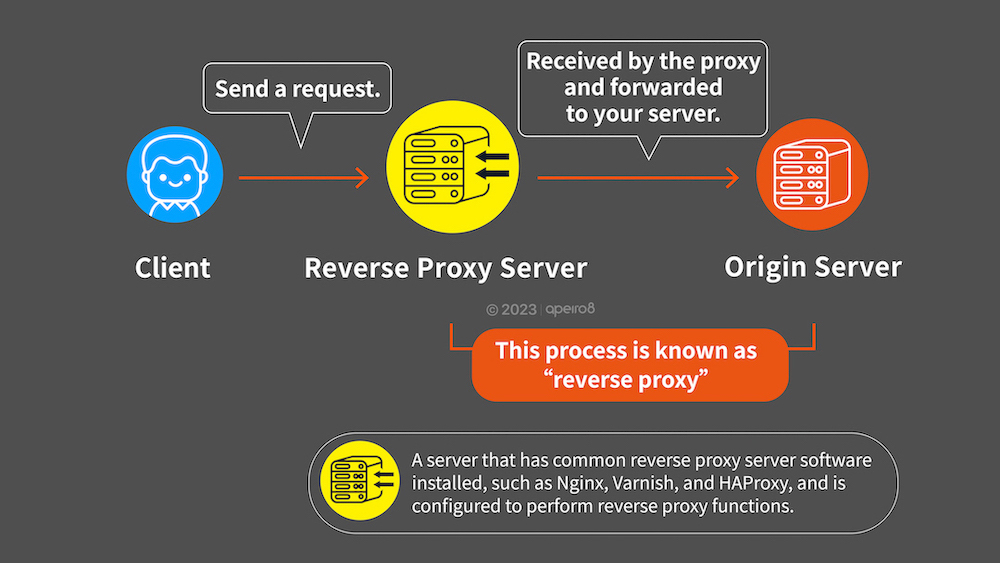
A server used for the purpose of reverse proxy is known as a “reverse proxy server”. Well-known reverse proxy server software includes notable ones such as Nginx, Varnish and HAProxy.
Reverse Proxy vs. Forward Proxy: Differences
The opposite of Reverse Proxy is Forward Proxy. The difference lies in the fact that a forward proxy acts on behalf of users, sending requests and forwarding them to the destination. Check out the diagram below for a clearer explanation.
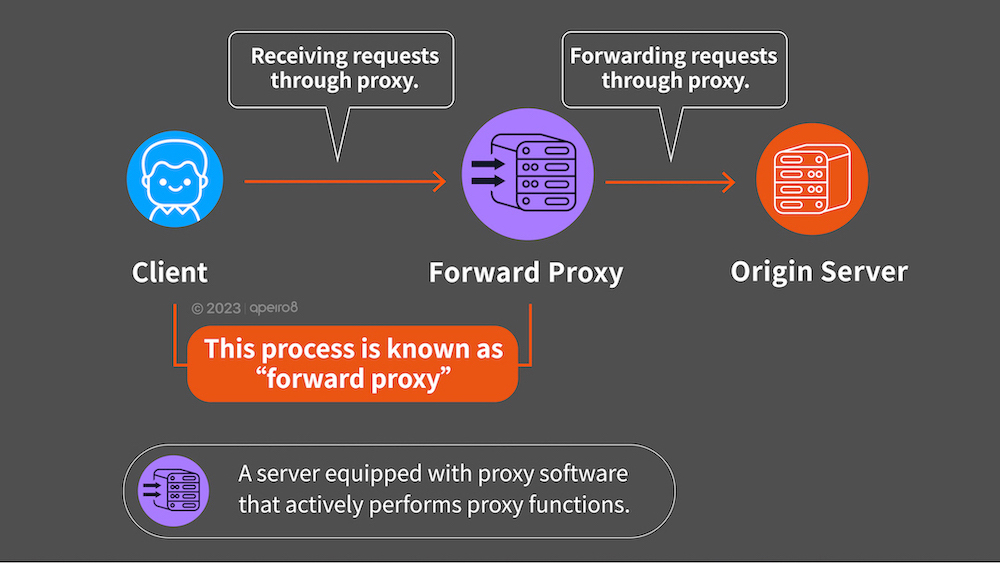
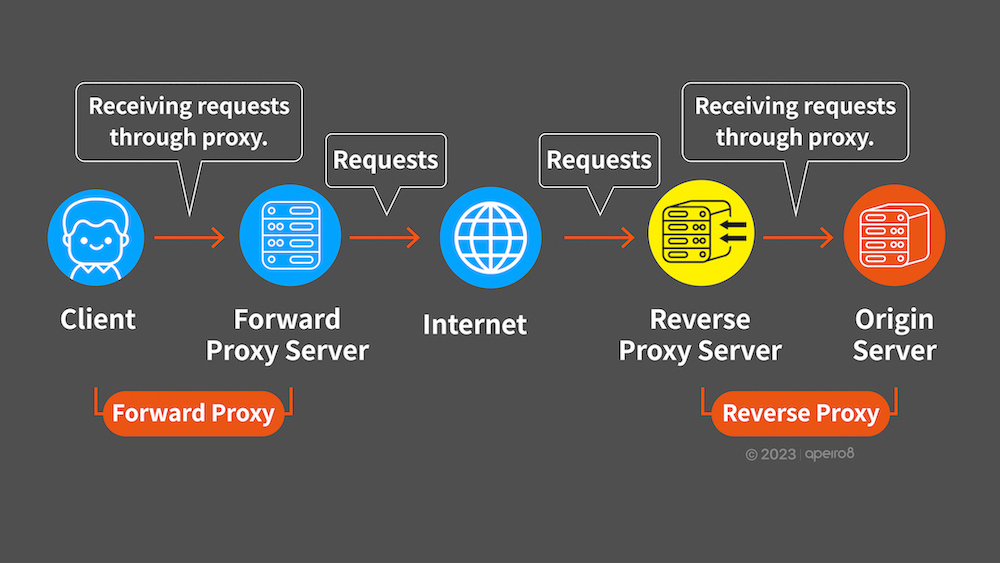
Powerful Advantages of Reverse Proxy Server
The application of reverse proxy is wide-ranging and has many benefits, including (but not limited to) content caching, traffic scrubbing, IP address masking and load balancing.
1. Content Caching for Website Acceleration
By allowing the proxy to respond to repetitive requests on behalf of the server, response time is reduced, resulting in an improved website experience.
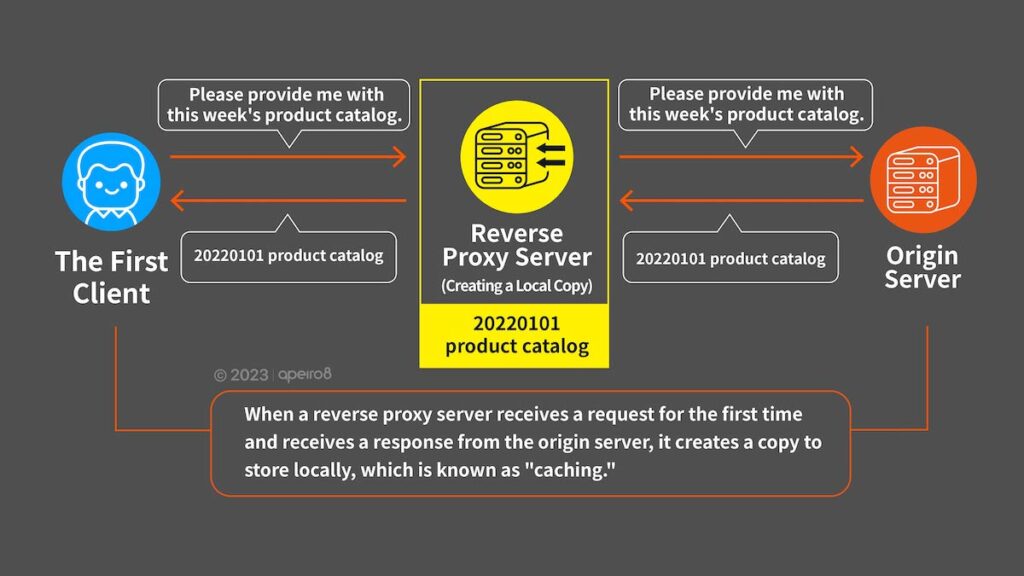
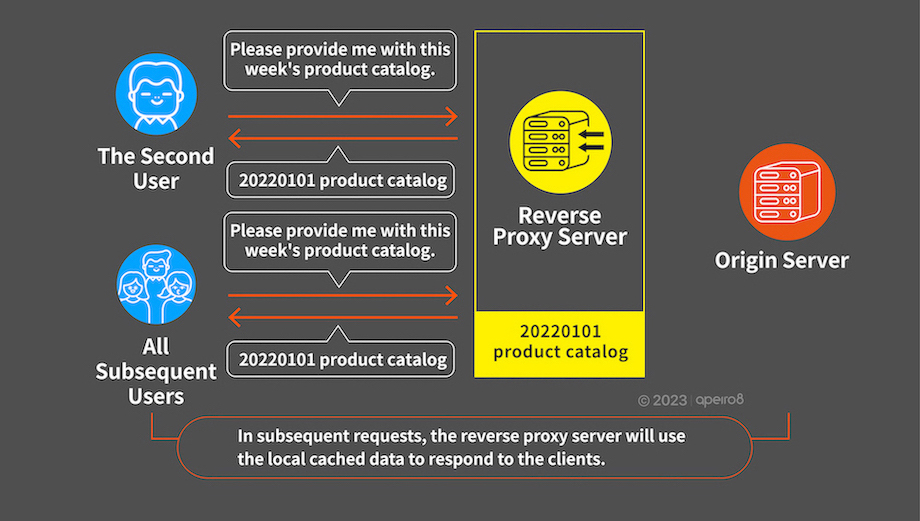
As the online business on website expands, content caching can not only save on network traffic costs, but also reduces burden on the servers; the more it is used, the more it saves.
Taking a 200KB image as an example, let’s assume there are 1,000 requests per day. This amounts to a usage of 200MB per day and 6GB per month (200KB * 30). However, if the CDN caching technology is used, the origin server will only be accessed once, and the CDN will reply to all subsequent requests. Now that is a big difference between 200KB and 6GB!
2. Traffic Scrubbing to Stop Malicious Attacks
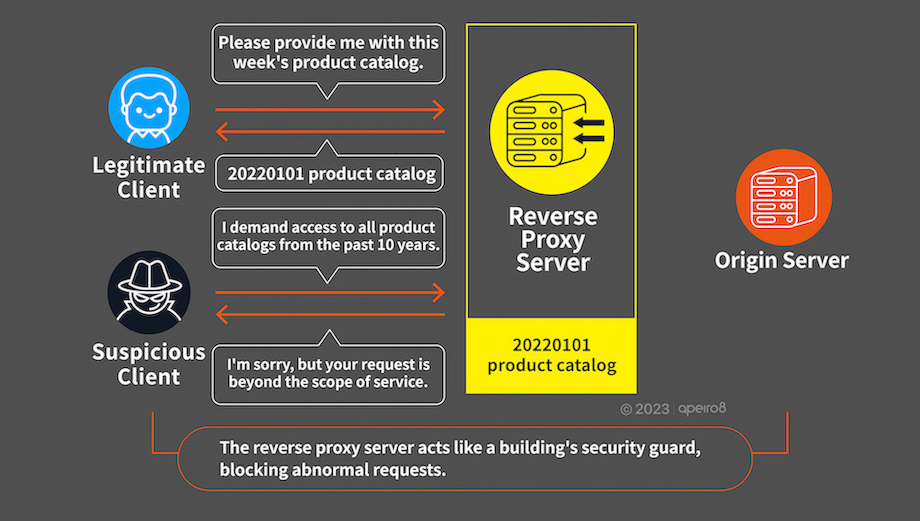
⬛ Recommend: What is CDN? Advantages, Trends of Content Delivery Networks
On the internet, there is a constant influx of abnormal requests (as you can see from the server request log). By using a reverse proxy server, these malicious requests can be effectively blocked, allowing the server to serve website users more efficiently.
In running a commercial website, you can usually see someone try to request the /login (login) path from the request log and is typically going on in an astonishing speed (usually by malicious access using a program). The website is now exposed in danger, like how someone is trying to enter your door with a bunch of keys! The CDN can block these unscrupulous actions in advance, like how a building’s security guard will filter out unwanted visitors for us.
From the request log, you can see that bots from around the world (malicious individuals using programs to automate access requests) are constantly trying to access your website through actions such as brute-force attack, malicious worms and vulnerability scanning. Therefore, it is essential to set up appropriate security strategies for your websites, such as using the WAF function of CDN to configure blacklists and whitelists for the sake of website security.
3. Hiding IP Address to Avoid Attacks
It’s much safer to hide behind a Proxy Server.
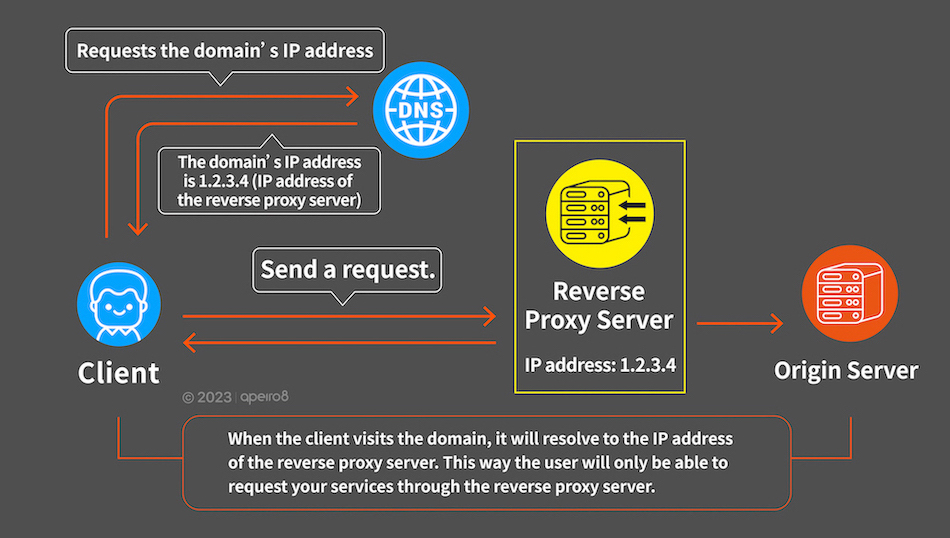
Through a reverse proxy server, users will identify that “the reverse proxy server is your server,” preventing your own server from exposing its IP address to network attacks, as well as eliminating the costs to replace server IP.
4. Load Balancing, Avoiding Server Overload and Removing Faulty Servers
Multi-point backups ensure your business expansion runs smoothly.
Generally, each server has its own IP address, which is requested by clients to access services. Therefore, when business expansion requires adding new servers, it is crucial to consider how to equally distribute traffic between servers, or how to re-direct traffic to healthy servers when a server becomes faulty, without affecting the experience of website users. This is where a reverse proxy server plays a vital role.
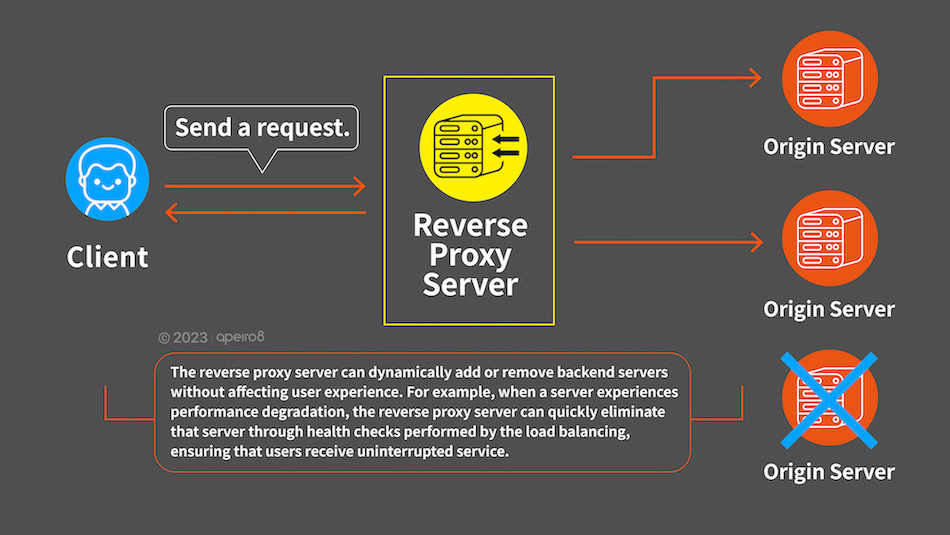
⬛ Recommend: CDN Services: Inside the 24/7 DDoS Security Center
By utilizing reverse proxy technology, businesses can easily achieve scalability (adding servers). Additionally, reverse proxies can intelligently eliminate abnormal origin servers. Here’s a further explanation:
Typically, domain name resolution can be configured at the DNS service provider to point to a single server IP address. This means that to expand the business (servers), an additional set of domain names must be configured to resolve to new server IP addresses. This approach increases the additional management (domain name) costs and can confuse users (too many domain names). Moreover, if a server experiences performance degradation, the operations team must promptly modify the resolution at the DNS service provider to point to a healthy server (otherwise, customer complaints will arise).
However, with the load balancing functionality of a reverse proxy server, the domain name can be resolved to the reverse proxy server, serving as the single-entry point for services. This enables the freedom to expand (or reduce) the business without the need to purchase and configure additional domain names. What’s even better is that the load balancing feature of reverse proxies typically includes health check policies, allowing automatic removal of unhealthy servers within seconds. This improves user experience and significantly reduces operational costs.
⬛ Recommend: CDN Architecture: Exploring Different Architectures and Benefits
How to Start Using Reverse Proxy?
From the above, it is evident that a reverse proxy can bring us many benefits. We can even say that whether you are just starting or already have your own online business, a reverse proxy server is an indispensable part.
If you have knowledge of server configuration, you can install the software mentioned above (Nginx / Varnish / HAProxy) and configure it to use reverse proxy. Alternatively, you can directly use CDN services, which not only provide a convenient user interface but also offer comprehensive traffic data reports, making your business and configurations clear and visible.
There are many CDN providers available, and you can choose according to your needs. If you prefer flexibility in CDN node selection, multi-CDN integration, hybrid cloud, private cloud, or even building your own CDN system, then you may consider using ApeiroCDN.
Is ApeiroCDN Suitable for Me?
If any of the following situations applies to you:
- Developing a new market or enhancing the user experience of the existing market.
- Already using other CDN services and assessing the feasibility of other CDN services (for backup/concurrent use)
- Considering the solution for private or hybrid cloud.
- Needing a dedicated CDN consultation team
- Wishing to own a customized CDN
ApeiroCDN has years of experience in CDN establishment and management, excels in providing network solutions, emphasizes flexible and adaptable configurations, and meets all CDN requirements through a professional management team and experienced technical personnel. From assessment to deployment, from consultation to operation, ApeiroCDN ensures all your CDN needs are fulfilled.
⬛ Recommend: Optimizing CDN Node (PoP) Quantity, Location, and Cost






